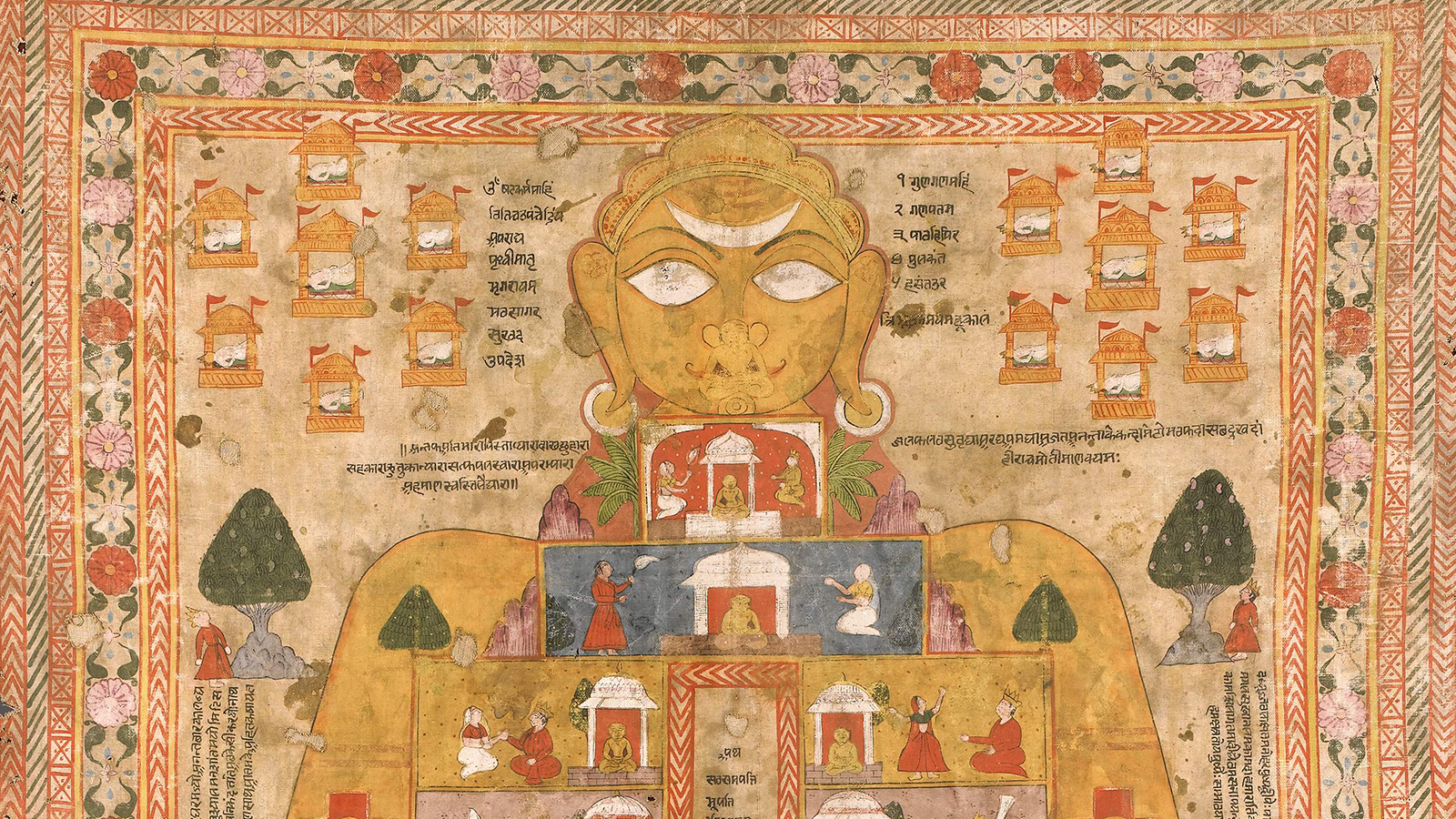This summer, in honor of the Carlos Museum’s centennial, a pop-up conservation experience in the John Howett Works on Paper Gallery will reveal one typically unseen aspect of museum work when visitors encounter conservators treating a Jain painting of a Cosmic Man.
The projects conservators undertake can be seen through the museum’s galleries, but the pop-up lab will give visitors unprecedented access to the kind of work that usually occurs in the Parsons Conservation Laboratory, located in an area of the museum accessible only to staff. When conservators’ work is complete, the Cosmic Man will go on view in the gallery.
The Cosmic Man is a visual representation of the Jain universe and its worldly subdivisions; within it, souls move between three realms—urhva loka (heaven), madhya loka (earth), and adho loka (hell)—their movement directed by the karma they have accumulated.
Among other uses, paintings of the Cosmic Man are utilized in temples as an educational tool. At Emory, faculty use the Carlos Museum’s Cosmic Man in courses on South Asian religion. Its conservation this summer will prepare it for further use and serve as an opportunity for visitors to learn more about art conservation.
Tentatively scheduled to begin in late summer, a team of conservators including ReneéStein, chief conservator; Brittany Dinneen, assistant conservator; Jessica Betz Abel, Mellon Foundation Advanced Conservation Fellow; Elizabeth Schulte, consulting paper conservator; Patricia Ewer, consulting textiles conservator; and student interns will work on view of the public.
The Cosmic Man painting will be treated atop a large table, an overhead view of which will be projected onto a gallery wall. Visitors will see conservators using tools like cameras, magnifiers, a HEPA vacuum, a nebulizer, microsponges, and fine hand tools such as tweezers, brushes, and needles as they secure powdery and flaking paint, a process known as consolidation, clean selected areas of the painting, and take post-treatment photographs.
The conservators’ work will be informed by research undertaken by Emory students enrolled in Stein’s fall 2018 course, Technical Art History: Examining Materials and Techniques. Students gained hands-on conservation experience as they mapped the painting’s condition, noting damage such as abrasion, tears, holes, stains, and patches. They also documented it under visible, ultraviolet, and infrared radiation studying the painting’s weave structure and identifying the pigments used in its creation. The students’ work will also be utilized as in-gallery didactic aids for visitors during the treatment process.
Visitors will be able to track the conservators’ progress against a treatment plan that will be posted in the gallery and updated daily. The conservators won’t be able to stop and chat as they work, but will answer questions about the work at a panel discussion this fall.
Similar to the Cosmic Man, which helps viewers visualize fundamental yet abstract concepts, this project will make visible that which is typically unseen. And, in a milestone year, it celebrates the museum’s most fundamental values: preserving the art in its care and creating special opportunities for visitors to learn from and engage with art.
A version of this story was originally published in the museum's spring 2019 newsletter.





